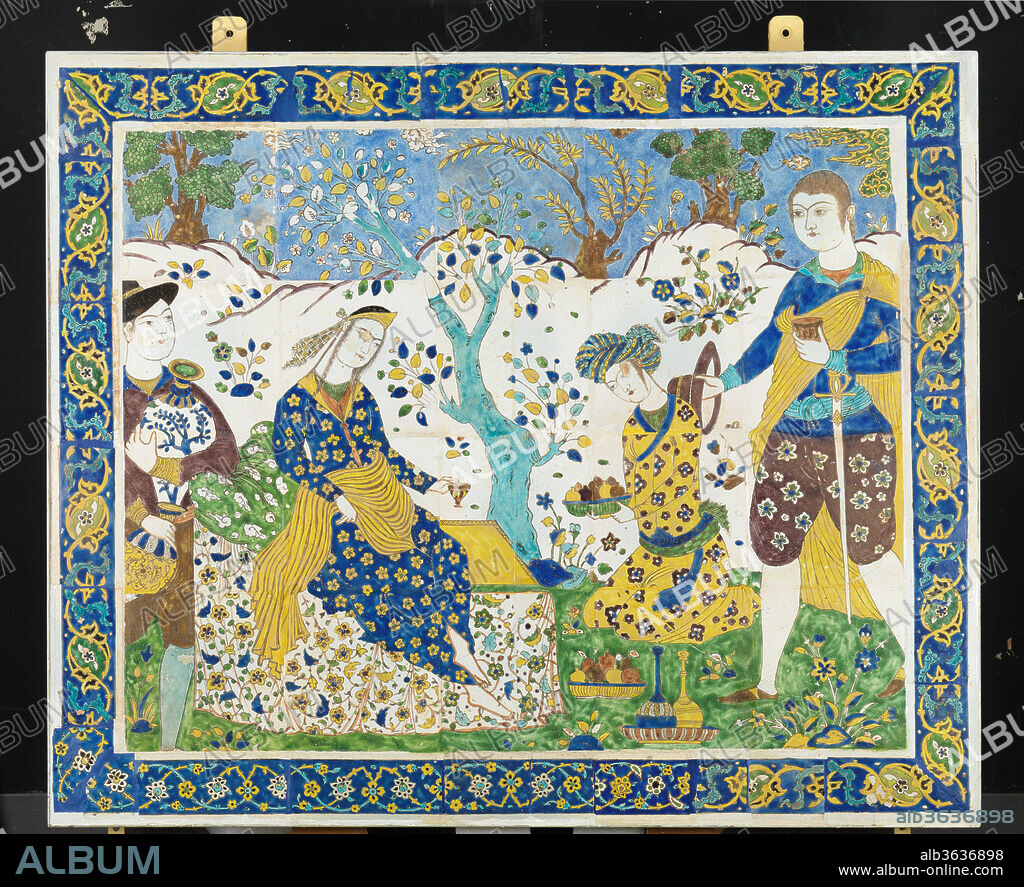alb3636898
Tile panel

|
Ajouter à une autre Lightbox |
|
Ajouter à une autre Lightbox |



Avez-vous déjà un compte? S'identifier
Vous n'avez pas de compte ? S'inscrire
Acheter cette image

Titre:
Tile panel
Légende:
Voir la traduction automatique
Tile Panel. Dimensions: Panel: H. 45 1/2 in. (115.6 cm)
W. 54 5/8 in. (138.7 cm)
D. 2 9/16 in. (6.5 cm)
Each tile: H. 8 7/8 in. (22.5 cm)
W. 8 7/8 in. (22.5 cm)
Top Mounts: H. 2 3/8 in. (6 cm)
W. 2 in. (5.1 cm)
D. 1/2 in. (1.3 cm)
Bottom mounts: H. 1 in. (2.5 cm)
W. 1 in. (2.5 cm)
D. 1/2 in. (1.3 cm). Date: first quarter 17th century.
Isfahan, the Safavid capital, and Na'in were the two main centers in which buildings were lavishly decorated with tilework. The old tile-making tradition of composing repetitive geometrical or vegetal patterns was kept alive on mosques and madrasas, but an important innovation on secular buildings was a composition of square tiles individually painted as single elements of an outdoor scene with characters set in a garden landscape. These were placed in royal garden pavilions from the time of Shah 'Abbas to that of Shah Sulayman (the last example being the Hasht Bihisht of 1669). The Museum owns three of these panels, all purchased in 1903 and reported to come from "a palace and pavilion built by Shah 'Abbas on the garden avenue of the Chahar Bagh at Isfahan." The panel here shows a woman and three men in the garden. Such scenes were among the most frequent and fashionable subjects chosen by miniature painters of the Safavid period.
Technique/matériel:
Stonepaste; polychrome glazed within black wax resist outlines (cuerda seca technique)
Musée:
Metropolitan Museum of Art, New York, USA
Crédit:
Album / Metropolitan Museum of Art, NY
Autorisations:
Modèle: Non - Propriété: Non
Questions sur les droits?
Questions sur les droits?
Taille de l'image:
4200 x 3421 px | 41.1 MB
Taille d'impression:
35.6 x 29.0 cm | 14.0 x 11.4 in (300 dpi)
Mots clés:
 Pinterest
Pinterest Twitter
Twitter Facebook
Facebook Copier le lien
Copier le lien Email
Email
